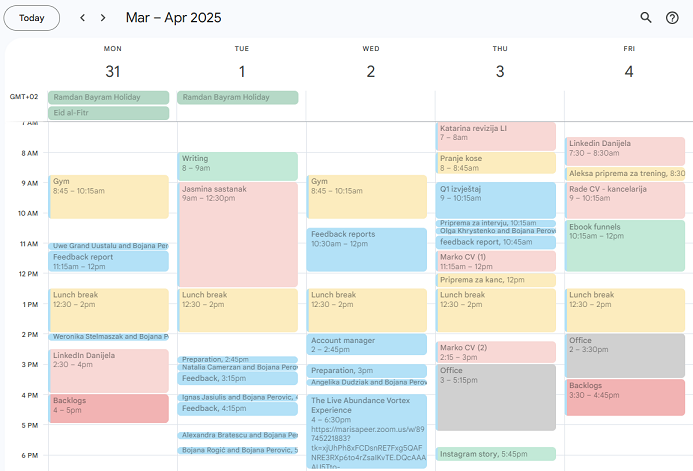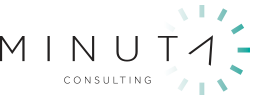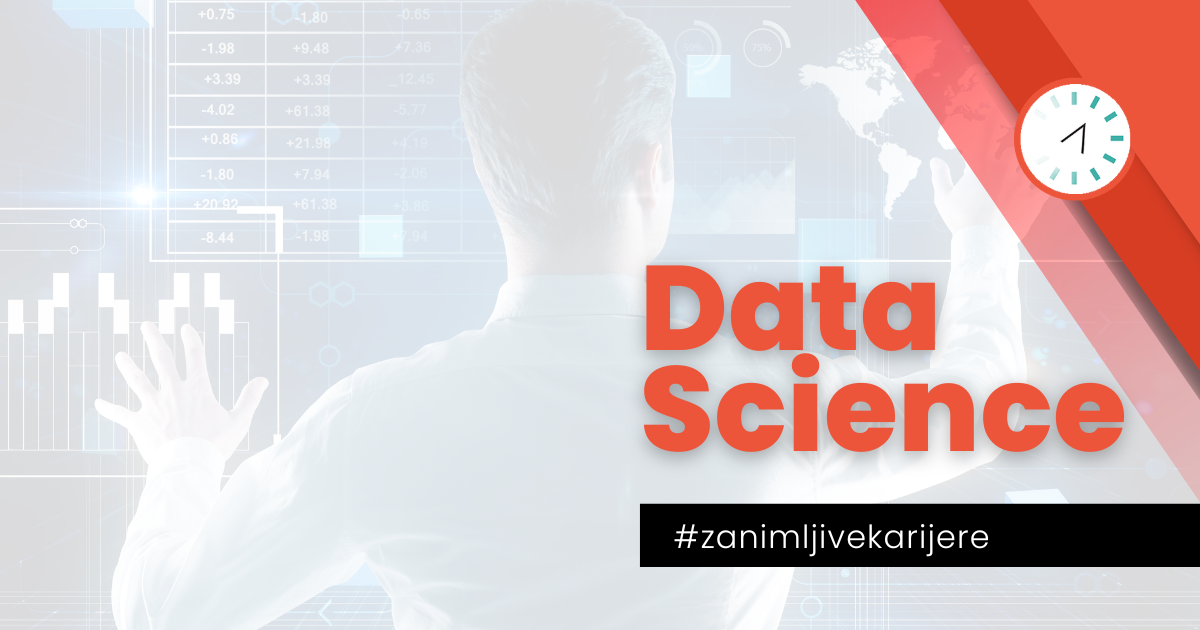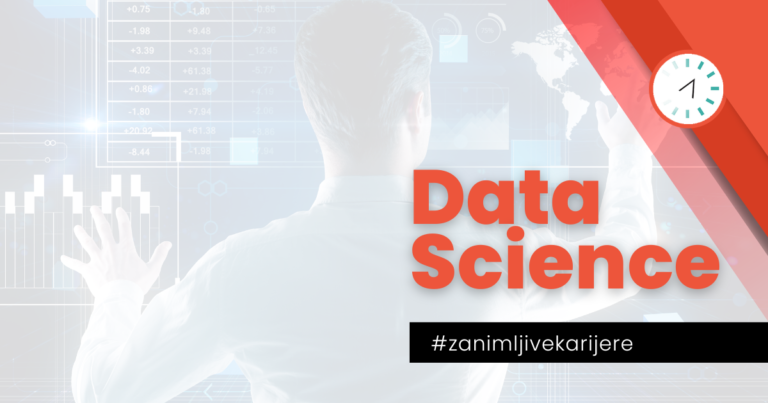Data Science.
Whenever I used to hear that before, I would think of a scene from a futuristic movie.
The reality is more different today, much more interesting.
Today, even without a college degree (which used to be truly impossible), you can make a huge leap in your career and become part of this revolutionary industry.
Think of this post as your treasure map, because I’m going to show you how to step into the world of Data Science, compare it with other similar jobs, and provide real, easy-to-apply steps toward success.
In this post, you will read about:
Why is Data Science career of the future?
If you belong to the older millennial generation, you probably remember a time when banks and financial institutions relied on handheld calculators, paper ledgers, and analog record-keeping methods. Just a few decades ago, analytical work required hours of manual counting, and a single data entry error could lead to serious problems.
Today, everything revolves around digital literacy, as software and automated systems have taken over that role, transforming the way we work. Naturally, in such an environment, Data Science is evolving faster than we could have ever imagined.
Statistics show that a Data Scientist's salary can increase by 30–50% within just a few years of entering the field. And the best part – a university degree isn’t a must (though it’s definitely a plus). All you need is determination and the right strategy!
Statistics and trends
- Rapid market growth: The global Data Science market is expected to grow by 40% over the next five years.
- High salaries: Transitioning into Data Science results in a significant increase in income, even without formal education.
- Job diversity: From finance and healthcare to retail – every industry is now seeking data experts.
Data Science, Data Analytics i Machine Learning: What is the difference between these?
Before we dive deeper into Data Science, let’s take a look at how these three professions differ. However, today, Data Science is the focus of our attention.
GENERAL DIFFERENCES: A combination of statistics, programming, and business insights. A Data Scientist not only analyzes data but also uses it to predict trends and create new business strategies.
MAIN FOCUS: Integrating statistics, programming, and business insights.
KEY SKILLS: Statistics, Python/R, Machine Learning, Visualization.
GENERAL DIFFERENCES: The focus is on data collection, cleaning, and interpretation. Analysts help companies make informed decisions, but they often lack the depth of predictive models used by Data Scientists.
MAIN FOCUS: Data collection and analysis for decision-making.
KEY SKILLS: SQL, Excel, data visualization, business intelligence.
GENERAL DIFFERENCES: The application of algorithms for automation and predictive modeling. This field is more specialized and requires a deeper understanding of mathematical and statistical models.
MAIN FOCUS: Creating models for automation and predictive algorithms.
KEY SKILLS: Algorithms, deep learning, working with "Big Data"
Note:: Although all three professions are extremely important, Data Science dominates as a game-changer in the industry – that’s why we’re focusing on it today.
How to Enter Data Science Field Without a Degree
STEP #1: Try to understand the basics
Before you start exploring courses and training, it's important to lay a solid foundation not only in terms of basic terminology but also through personal self-assessment.
Why are self-awareness and self-assessment important?
What would happen if, after a year of studying this field and investing a lot of money in education, you realize that working with data doesn’t align with your natural desires and talents? You’d likely feel demotivated and misguided.
To prevent this from happening, explore your affinities and conduct proper assessments. There are many tests online that can help with this – from personality tests to aptitude tests. Our favorite is the NBI assessment, which almost never misses when it comes to these things, and after taking it, you’ll know exactly if your brain naturally gravitates toward numbers.
Other tests you can take are various cognitive tests.
Now that you've established that numbers "work for you," let's start with the basic terms you need to know:
Dataset: a structured set of data used for analysis and modeling. It typically contains data organized in rows and columns, which allows for easier processing and interpretation.
Algorithm A series of steps or rules used to solve a problem or perform a specific operation. In Data Science, algorithms are applied to process data, create models, and make decisions.
Machine Learning: a subfield of artificial intelligence that enables computers to learn from data and improve without explicit programming. Through learning from examples, models can recognize patterns and make predictions.
Deep Learning: a specialized branch of machine learning that uses multilayered neural networks to analyze complex patterns in large datasets. It is particularly effective in recognizing visual, auditory, and linguistic patterns.
Data Mining: the process of discovering hidden patterns and correlations within large datasets using statistical and machine learning techniques. The goal is to find valuable insights that can support business decision-making.
Data Visualization: the process of converting data into visual representations, such as charts, diagrams, and maps, to make complex information easier to understand. A good visual representation enables quick data interpretation and the identification of key trends.
Predictive Modeling: it uses statistical techniques and machine learning to create models that predict future outcomes based on historical data. These models help organizations plan ahead and make strategic decisions.
Feature Engineering: the process of transforming raw data into relevant features that improve the performance of machine learning models. It involves selecting, modifying, and creating new variables that better represent the problem.
Supervised Learning: a machine learning technique where the model learns from data that is pre-labeled with correct answers. The goal is to learn a rule that can be applied to new, unlabeled data to predict outcomes.
Unsupervised Learning: an approach where the model analyzes data without predefined labels or goals, looking for hidden structures or patterns. It is most commonly used for clustering or dimensionality reduction of data.
Reinforcement Learning: a machine learning technique where an agent learns through interaction with its environment, receiving rewards or penalties based on its actions. The goal is for the agent to develop an optimal strategy that maximizes the total reward over time.
STEP #2: Enroll in creditable, certified training programs.
It’s great that you’ve purchased a course on Udemy, that’s a good place to start. However, if you think that after completing that course employers will be fighting over for you – I’m sorry, but they won’t.
Udemy, Coursera, and similar platforms are like fast food chains. What you need is a fine dining restaurant.
Explore certified training programs that offer one-on-one or group mentoring, as well as those that include a mini project as an outcome. By the way, we are currently in negotiations regarding a certification, so if you've made it this far, it might be a good idea to get on the waiting list, and we’ll notify you when everything is finalized. Sign up HERE. The certification will be conducted by an accredited international institution and will be in English.
In the meantime, while you search for the ideal training for yourself, learn Python or R – the key tools for every Data Scientist.
There are free tutorials available, here are a few I found (some are even up to 6 hours long!):
Each new line of code brings you closer to your goal, but you will also need to invest time and master some basic concepts of statistics. To be clear – you don’t have to become a mathematical genius, but understanding the basic principles can be crucial. Additionally, modern companies test candidates' cognitive abilities, including numerical skills, which are quite predictive and help us assess how a person will measure the results of their work, how precise they will be, their focus on specific tasks, and more.
In addition, visualization tools like Tableau or Power BI will help you turn data into stories – and every good story hits right at the heart of the audience (and recruiters).
STEP #3: Learn through practical projects
A person with experience in a field is worth more than three people with certificates from the most prestigious global institutions! It’s crucial that you apply everything you learn in practice, and although no one told you this in school – the real world expects you to figure things out on your own.
There are several ways to achieve this, and the easiest way is to start with volunteer work, a mini project, or work with a mentor. This third option requires the greatest investment, but it brings the best results because you’ll learn things from the mentor that you wouldn't otherwise, putting you one step ahead of others.
Imagine being asked a technical question in a job interview, and you answer it correctly, adding that you learned it through working with a mentor! Now, tell me – who wouldn’t want to hire someone who invests in their knowledge and has a mentor?
Start with simple mini projects right after completing a course, training, or certification. This could involve analyzing publicly available datasets or creating basic data visualizations. Try applying some simple machine learning models to strengthen your portfolio. Go to a friend who owns a business and ask if they need help in the form of freelance work. Since you're a beginner, don't shy away from volunteer work – but set clear boundaries: I will do this and that, by this and that time, and in return, I expect this and that.
STEP #4: There's nothing without a strong network of contacts
The easiest way to enter a new market is to be top-of-mind for everyone. In other words, whenever someone in a conversation mentions "Data Science," everyone else should say, "Ah, I know a guy, Peter, he works in that field..."
Peter is top-of-mind, not because he sits at home learning about Data Science, but because he talks about it to everyone. He has a network of people around him, and he also comments on posts on LinkedIn.
He’s a member of every group related to the topic, and there’s no way he’ll miss a new trend. He actively participates in discussions and leaves meaningful comments on posts written by experts in the field. He isn’t afraid to ask them questions.
He attends all the meetups where like-minded people gather and collects valuable contacts of potential collaborators and mentors.
He posts a new update on LinkedIn every week related to his area of interest and thoughtfully adds decision-makers from companies on his list to his network.
By the way, if you missed it, I wrote about those lists in the blog "Job Search Strategies No One Talks About." It would be a good idea to check it out.
What does a typical workday in this position look like?
You are going to love this.
Jedna od najuzbudljivijih prednosti Data Science karijere jeste mogućnost rada od kuće – ili bilo kog mjesta na svijetu. Evo nekoliko ideja i savjeta kako da iskoristite ovu priliku:
Advantages of remote work
As a Data Scientist, you often have the freedom to organize your work schedule. This means you can balance work tasks with personal life – more time for family, hobbies, or even additional learning. However, be cautious, as flexibility can slowly become a double-edged sword!
Just because your working hours are flexible doesn't mean you can always sleep during the day and work at night. There’s a team of people who prefer to be active from 9-5, so for good collaboration, you'll be expected to be available during that time frame.
Working from home means you can forget about the daily rush in public transportation or fuel costs. It means more money in your pocket and less stress on the way to the office. It also means breakfast and lunch at home, but often skipping afternoon coffee with friends. After a while, you might feel like your social life is being neglected. We’ve got tips for that too, so keep reading 🙂
Many companies now embrace remote work, meaning you can apply for jobs worldwide, no matter where you live. This opens the door to international projects and collaborations, which later impact your reputation and, of course, your salary!
How to organize your work from home?
Create a comfortable and functional workspace – let it be your "little office" that inspires productivity. Ideally, it shouldn't be your bedroom, but hey…
Invest in a good chair, workstation, and all the necessary technical tools. I also recommend a desk with adjustable height for those moments when you feel like standing. Some people I know even use a walking/running treadmill and typically use it during brainstorming sessions, listening to tutorials, and the like.
I even have one client who runs during the meeting. Cool.
Structure your day. Set clear work hours and break times.
If you feel like you're not being efficient, try the "Pomodoro" technique to focus in intervals, followed by breaks – it helps you stay productive while also staying rested. This is my favorite technique whenever I feel like I need to concentrate: I turn pomofocus on and work in intervals of 25 mins and 5 mins water, phone, coffee, or toilet break.
I like to block time slots in my Google Calendar, where I always have different colors for different categories of tasks. I do this planning on weekends, although during the current week, I start slowly filling in the appointments for the next one. This helps me not to wander from task to task in the morning, but to know what’s “on my plate” that day

This is my calendar: yellow for personal tasks, blue interviews and workshops, baby pink work with coaching clients, dark pink pending tasks from previous days, green marketing and writing, grey for internal meetings
Use tools like Slack, Zoom, or Microsoft Teams to communicate with colleagues, communities, and mentors. Regular online meetings help maintain team cohesion and make you feel like part of a larger community, even when working from home.
Use Asana, Trello, Notion or ClickUp to organize your projects. If you're a beginner, you might need a tutorial to get everything organized (especially when it comes to Notion, because it's so flexible that you can easily get lost), but once you do, there will be no more wandering. Everything will be in one place, clear, and accessible.
Working from home can sometimes lead to getting too absorbed in work. Set boundaries – turn off work notifications after hours and dedicate time to your interests. Your mental balance is crucial for long-term success. That’s why, even though you have flexible working hours, it’s best to set some general time blocks during which you’ll work.
How much do Data Scientists typically earn?
Depending on your years of experience and level of expertise, this salary can vary, but it is certainly well above average. Additionally, the location you are in can influence your salary.
Take a look at this research Coursera did on annual earnings for this position:

That comes out to around 8k to 10k USD per month. Great figures, I would say.
Is it worth trying?
That's on YOU to decide 🙂
To summarize...
A career change into Data Science starts with one small but determined step. If you're ready to dive into the adventure and open new doors, now is the perfect time to take action. You already know that a formal degree isn't a requirement — it's your passion, persistence, and hands-on experience that truly matter!
If you see yourself in this and want to learn more about a practical and comprehensive path toward a Data Science career – one that also includes remote work opportunities – sign up for the waitlist for the certification I mentioned. As soon as we’re ready to share all the details, you’ll be among the first to hear about this amazing opportunity.
Kliknite here to apply.
Catch you in one of the next blog posts, and until then – chin up, better careers are on their way!






